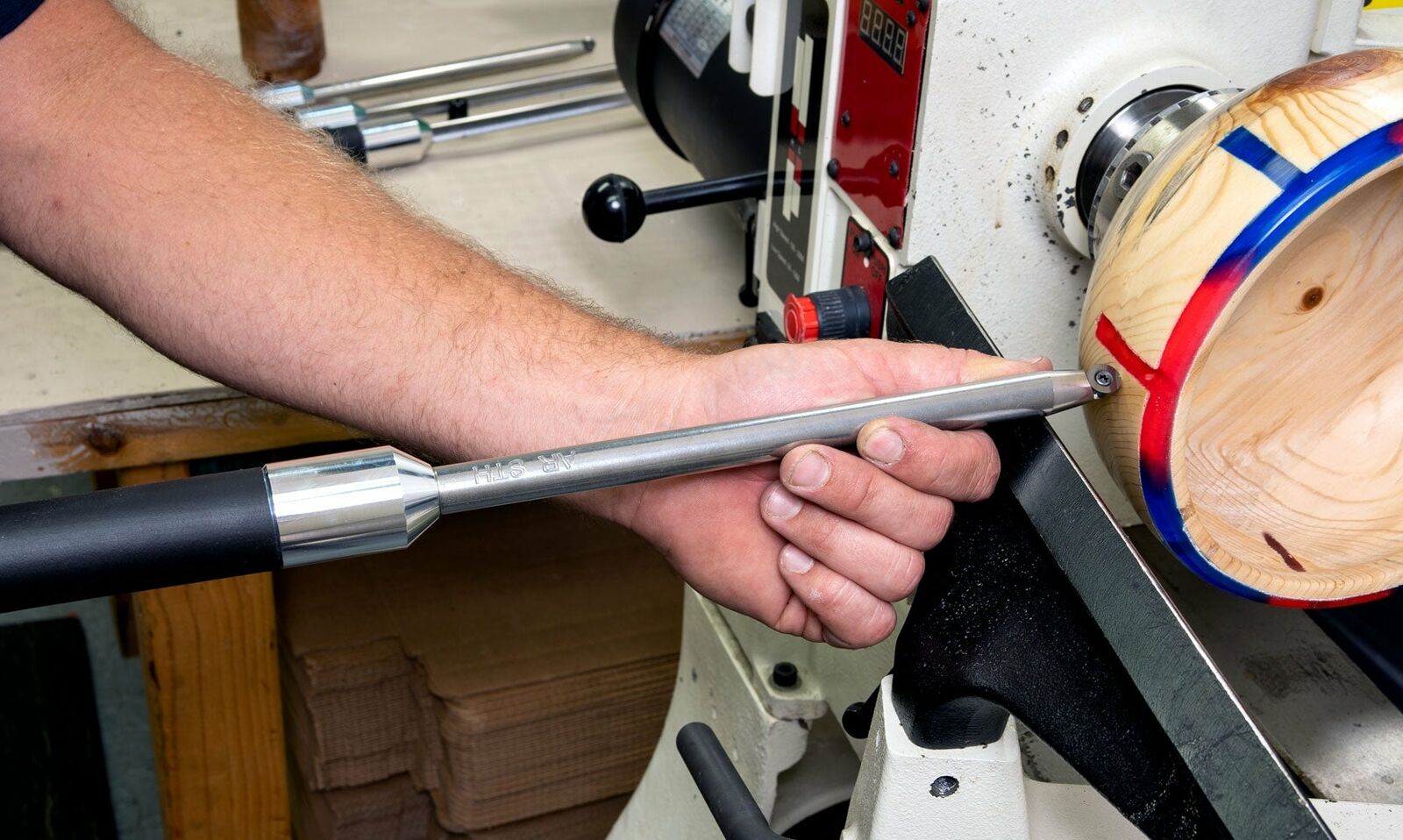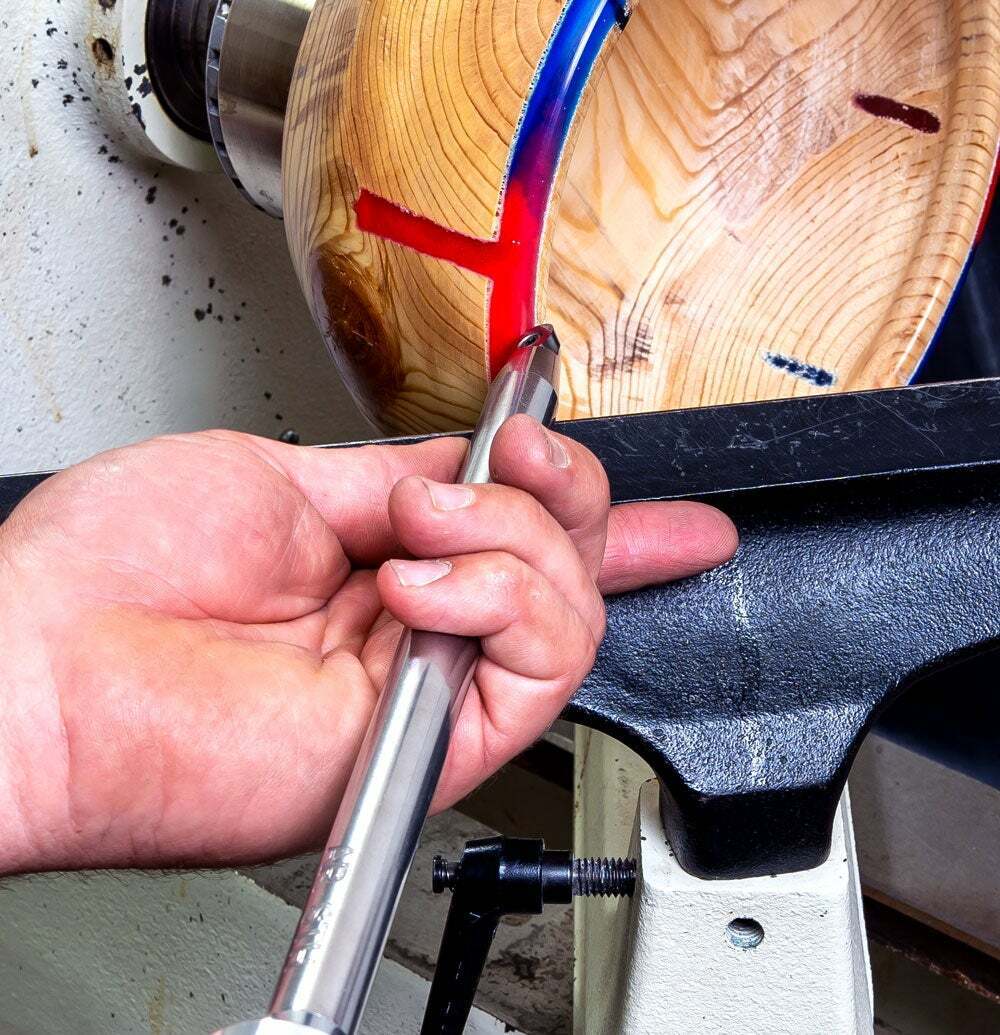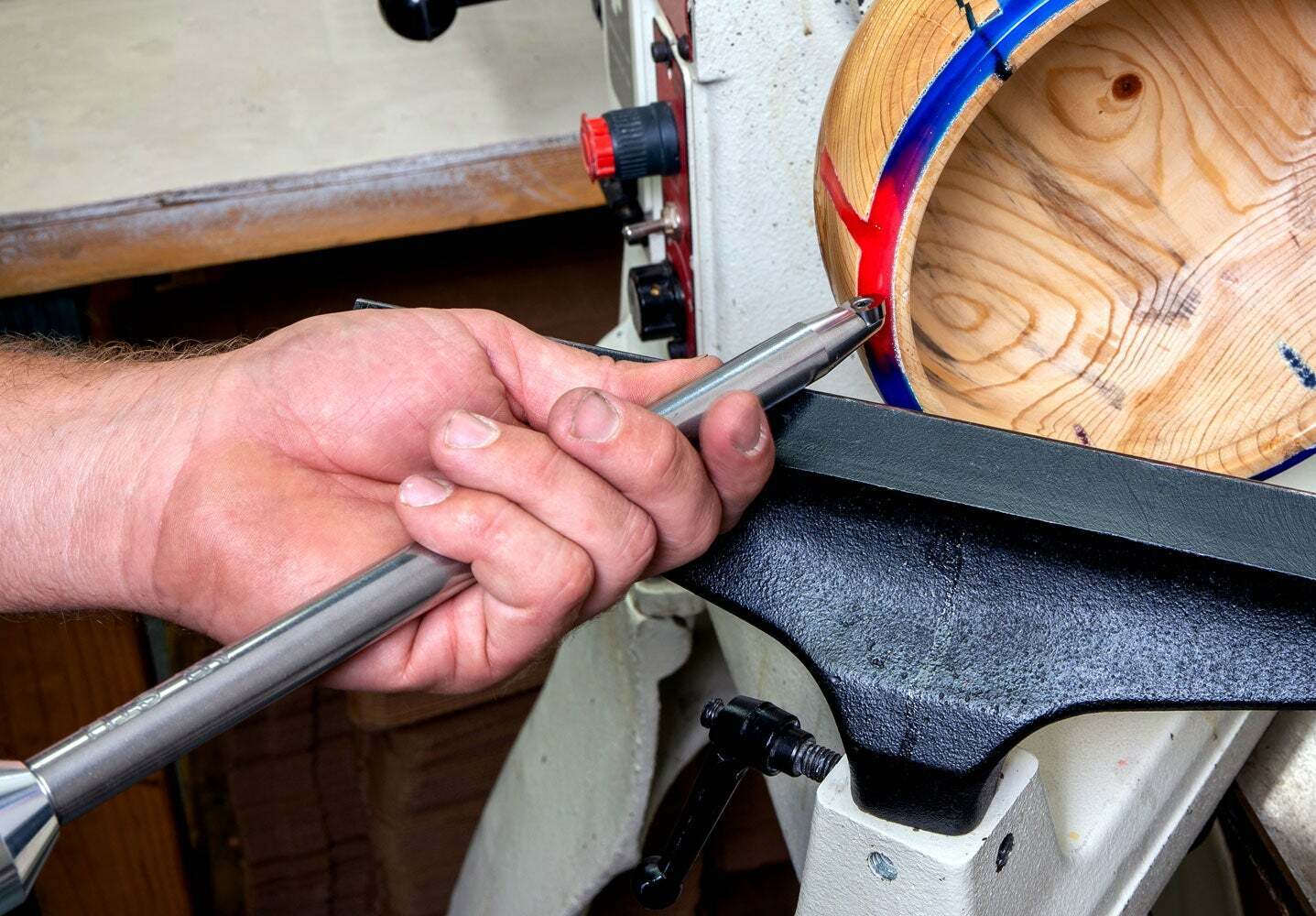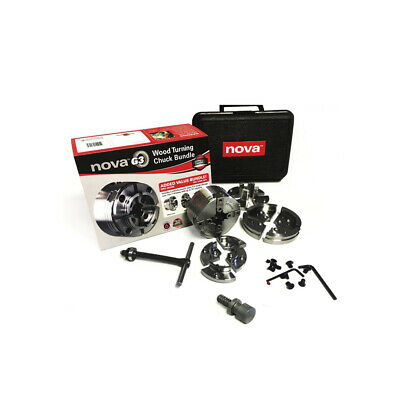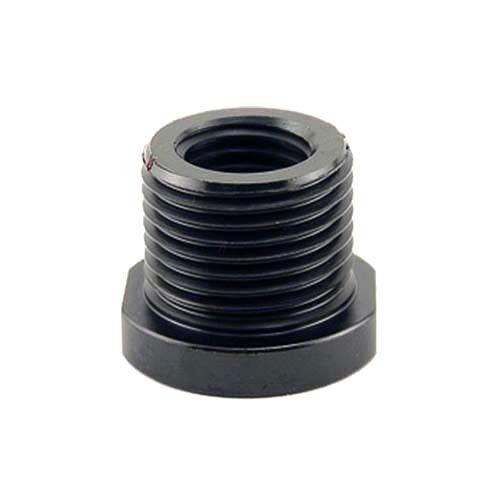-40%
Acrylic/Resin Set of 4 Carbide Turning Tools - Full Size (12" Tools with 17" Han
$ 138.85
- Description
- Size Guide
Description
Tools Specifically Developed for Turning Epoxy Resin, Acrylics and HybridsThis 4 tool set of AR (Acrylic/Resin) tools includes:
1. AR STH (Simple Turner & Hollower):
This turning and hollowing tool harkens back to the traditional gouge and features a round shaft
with a
round flat top carbide cutter. The classic “riding the bevel” technique, the same used as with a traditional gouge, produces great shear cutting action as opposed to a scraping cut that chips man made materials. This technique is the answer to cutting difficult materials as well as wood so it is the perfect tool for hybrid projects. Adjusting the rotation angle controls the aggressiveness of the shear cut. Plus, it has the added benefit of pointing the “ribbons” or shavings away from you so they do not hit you in the face or wrap around the turning
,
blocking your view of the tool and project. This tool is ideal for beginners as it is simpler to use and less aggressive than the Simple Shear Cutting Finisher.
Ride/Rub the bevel on the workpiece, then raise the handle until it begins to cut.
Rotate or roll the tool on the tool rest in the direction you are going to move.
Cut slightly above the centerline of the lathe.
5/8” Round Tool Shaft with ½" Round Flat Top Carbide Cutter (search for AR STH for replacements)
2. SSCF (Simple Shear Cutting Finisher):
The Simple Shear Cutting Finisher has proven to be the very best all-around tool. It’s great on resin, acrylic, hybrid or straight wood pieces. This tool allows you to make shearing cuts which work wonders on both acrylic,
resin and wood. The round tool shaft and round, saucer shaped carbide cutter allows you to adjust your aggressiveness. You can rotate the shaft about its axis; the more you rotate it the lighter the cut. While you would never present this tool flat to the work, only a slight angle will give you an aggressive cut and really send the ribbons flying. Rotate the cutter a little more and you can shoot the chips away from you and keep an eye on your work piece instead of the buildup of ribbons. While this tool can take a little more practice to use, it always becomes a favorite.
Designed to be presented to the work at an angle, to give you a shearing cut.
The aggressiveness of this cutter can be adjusted by how much you roll the tool.
Rotate or roll the tool on the tool rest in the direction you are going to move.
5/8” Round Tool Shaft with ½" round saucer shaped cutter (search for SSCF for replacements)
3. AR S90 (Simple 90 Detailer):
The square tool shaft and square negative rake cutter make this tool incredibly useful in removing material (roughing pen blanks). You can plunge it straight into a piece for small lines, grooves or other detail work or you can approach the piece at a 45 degree angle and make a roughing cut. You can use it to turn down the sharp corners of your pen blank. This tool was a favorite in our testing.
Tool is held flat on the tool rest
½” Square Tool Shaft with 15mm Square Negative Rake Carbide Cutter (search for AR S90 for replacements)
4. AR SR (Simple Rougher):
This simple to use tool with a square negative rake cutter on a square shaft is ideal for roughing and making straight lines and flat surfaces.
Tool is held flat on the tool rest
½” Square Tool Shaft with 15mm Square Negative Rake Carbide Cutter (search for AR SR for replacements)
Handle Details:
Material: Solid aluminum CNC machined with comfortable foam grip handle
Overall length: 17"
Outside diameter: 1 3/8"
Opening for tool: ½" diameter
Tools are easily changed by loosening two stainless steel Allen set screws.
Acrylic, Resin and Hybrid projects have changed the woodturning landscape.
Traditional carbide tipped tools did not perform well with these new materials, so we set out to make a solution. The birth of our Acrylic/Resin (AR) tool line came as a result of a lot of trials (and errors), turning all types of man-made and hybrid projects. The goal was to create tools that could be used to turn any of the man-made materials we could find, while giving the turner as much creative artistic ability as possible. A one size fits all approach did not produce the desired results across all the different materials available, including hybrid pieces. A nod back to a few early woodturning techniques with the development of carbide tools used like traditional gouges also proved to be a very successful and great approach.
A few things to keep in mind:
Turning acrylics takes longer than wood.
Shearing cuts proved to be very successful, where scraping cuts were not.
Introduce your cutting edge slowly, try not to “stab” the wood as plastics can shatter with this technique.
Increase your lathe speed and slow your tool presentation to the blank.
Work from the ends inward.
When using the round shaft tool, begin by “rubbing the bevel” as you would a traditional gouge, introducing the cutting edge slowly until you begin to see it cut and get the feel for it.
Make light cuts to reduce chip outs. Increase your aggressiveness as you get the feel for it.
Watch our Tool Demonstrations here:





